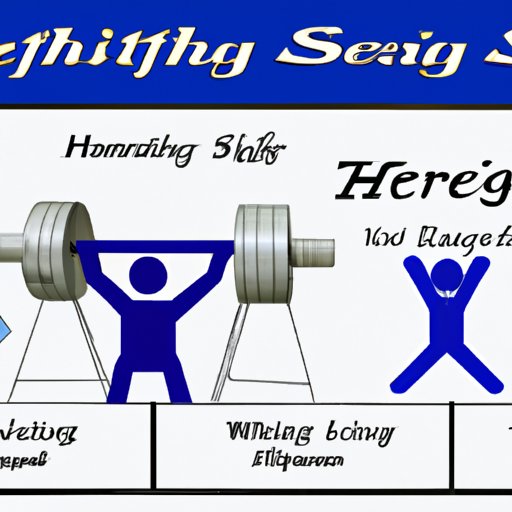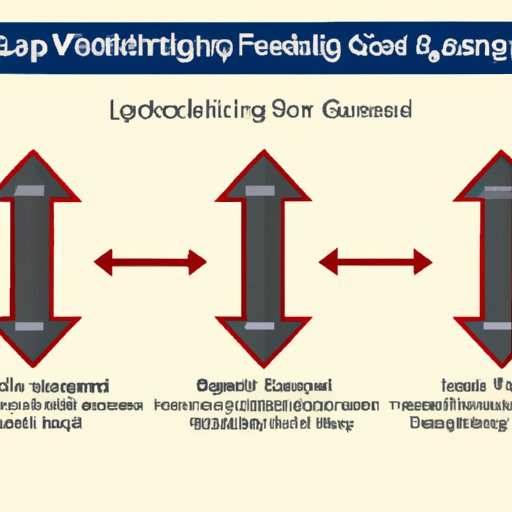Introduction
Strength training is an important part of any fitness regimen. Knowing how much you should be able to lift can help you tailor your workouts to meet your individual goals. In this article, we’ll explore the benefits of knowing your personal lifting limits, how to calculate your one-rep max, design a safe and effective weightlifting program, select the right weights, and use progression strategies for gradual increases in weight.
Strength Training: How Much Should You Be Able To Lift?
The amount of weight you should be able to lift will depend on your individual goals. Before you start any type of strength training program, it’s important to identify your personal strength goals. Are you looking to build muscle mass? Increase endurance? Improve overall health and wellness? Knowing what you want to achieve will help you determine the right amount of weight to lift.
Calculating Your One-Rep Max
Your one-rep max (1RM) is the maximum amount of weight you can lift in one repetition. It’s used to measure your strength and track your progress over time. Calculating your 1RM can help you set realistic lifting goals and ensure that you’re pushing yourself without overdoing it. There are several methods for calculating your 1RM, including the Epley formula, the Brzycki formula, and the McGlothin formula.

Understanding the Relationship Between Reps and Sets
When it comes to strength training, reps refer to the number of times you perform a particular exercise, while sets refer to the number of groups of reps you do. For example, if you do three sets of 10 reps of bicep curls, you’ll be doing 30 reps total. Generally speaking, higher reps with lighter weights are used for muscular endurance, while lower reps with heavier weights are used for muscle building. Knowing the relationship between reps and sets can help you create a weightlifting program tailored to your individual needs.

Designing a Safe and Effective Weightlifting Program
Creating an individualized weightlifting program is essential for achieving your strength goals. When designing your program, there are several factors to consider, such as selecting appropriate exercises, utilizing proper form, and incorporating rest and recovery. It’s also important to start at a weight that’s comfortable for you and gradually increase the intensity as you become stronger. Working with a qualified trainer or coach can help you design a safe and effective program tailored to your individual needs.
Choosing the Right Weight for Your Lifting Goals
Once you’ve identified your goals and created a weightlifting program, it’s time to choose the right weights for your lifts. Start by establishing a starting weight. This should be a weight that’s challenging but not too difficult. As you become stronger, you can adjust the weights accordingly. Make sure to give yourself enough time to rest and recover between sets and workouts.

Progression Strategies for Gradual Lifting Increases
In order to make steady progress in your strength training program, it’s important to use progression strategies for gradual lifting increases. Plateaus can occur when you’re stuck at a certain weight for a prolonged period of time. If this happens, try increasing the intensity of your workouts by increasing the weight, reps, or sets. Additionally, make sure to take adequate rest and recovery days to allow your body to rest and grow stronger.
Conclusion
Strength training is an important part of any fitness regimen. Knowing how much you should be able to lift can help you tailor your workouts to meet your individual goals. In this article, we explored the benefits of knowing your personal lifting limits, how to calculate your one-rep max, design a safe and effective weightlifting program, select the right weights, and use progression strategies for gradual increases in weight. With the right knowledge and dedication, you can reach your strength goals and enjoy the many benefits of strength training.
(Note: Is this article not meeting your expectations? Do you have knowledge or insights to share? Unlock new opportunities and expand your reach by joining our authors team. Click Registration to join us and share your expertise with our readers.)
